Exercise is absolutely vital for healthy living, especially if you have COPD or another respiratory disease. But when you're hooked up to your oxygen tank or concentrator, it can make working out and doing other physical activities a little bit more tricky.
Fortunately, exercising with oxygen isn't too difficult if you know how to do it right. In fact, the extra oxygen you get should make it easier to exercise by improving your endurance and making it easier to breathe.
In this article, we're going to give you a variety of tips and techniques to help you better manage exercise while you're using supplemental oxygen. That way, you can continue living an active, healthy life without letting your disease or your oxygen therapy get in the way.
How Oxygen Helps You Exercise
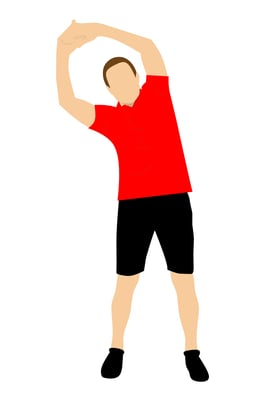
Many patients with COPD and other breathing disorders use supplemental oxygen when they exercise, including those who use oxygen 24/7 to manage their disease. If you have mild COPD, your doctor might prescribe you oxygen specifically to use when you work out or do other activities that make you feel short of breath.
When you exercise, your body's oxygen needs go up as your muscles work hard to move your body. This forces your lungs to work harder, too, by taking more frequent breaths.
This is why physical activity can make you feel so short of breath when you have COPD. Because your lungs don't work as efficiently, they have trouble absorbing enough oxygen to keep up with your body's needs.
As a result, your blood oxygen levels can fall, causing you to feel short of breath. It can also trigger other COPD symptoms like coughing, wheezing, and fatigue.
That's where oxygen comes in: it allows your lungs to absorb more oxygen with every breath you take. This keeps your blood oxygen saturation at a healthy level, and it can be particularly helpful during exercise.
By helping your lungs work more efficiently, supplemental oxygen makes it much easier to exercise and do other activities that put extra strain on your lungs. It can also reduce your respiratory symptoms and make it easier to breathe.
Overall, oxygen therapy allows you to do more physical activity for longer periods of time without feeling as breathless or fatigued. It also helps keep your heart healthy by reducing the strain that is caused when your blood oxygen levels fall too low.
Now that you understand why using your supplemental oxygen is so important, let's take a look at how to use it when you exercise. In the following sections, we'll give you a variety of practical tips and techniques you can use right away to work out more easily on oxygen.
How to Exercise with Oxygen
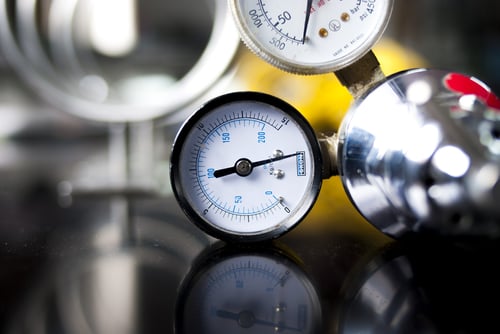
Getting used to moving around and working out on oxygen isn't exactly easy. Oxygen equipment can be bulky, unwieldy, and difficult to handle, especially during physical activity.
However, the limitations you face because of your oxygen will be different depending on what kind of oxygen supply you use. For example, using a portable oxygen concentrator gives you significantly more mobility than oxygen tanks and full-sized oxygen concentrators.
Luckily, there are many ways to work around the challenges of exercising with all your oxygen equipment in tow. In these next sections, we're going to show you a variety of techniques for working around your equipment and exercising safely and effectively on oxygen.
By learning how to manage your symptoms, your equipment, and find oxygen-friendly exercises, you'll find that you can do all kinds of physical activities while hooked up to your oxygen machine. We'll show you how to make oxygen therapy more comfortable and so you can reap the greatest possible benefits from your oxygen when you work out.
Take heart in the fact that there are many solutions for making oxygen therapy more comfortable and convenient, no matter what kind of physical activity you enjoy. Even though it may take some adjustments, you can make exercise happen, whether you use oxygen just occasionally or 24 hours a day.
Use a Portable Oxygen Concentrator

When you use an oxygen tank or full-sized concentrator, you have to deal with long extension tubes that connect you to the device, which may be several feet away or even in a different room. However, a portable oxygen concentrator is small enough to carry on your person, eliminating the hassle and danger of getting tripped up by long tubes.
Many portable concentrators only weigh a few pounds and are easy to wear on your back or sling over your shoulder. Because you're not tethered to a heavy oxygen machine, this gives you much more freedom and flexibility to move around.
Using a portable oxygen concentrator allows you to go on walks, do aerobic exercises, and all kinds of other activities without hauling or maneuvering around bulky equipment. It also makes it easier to go to the gym when you don't have to wheel a heavy oxygen tank around.

While portable oxygen concentrators can be pricey, they give you much more freedom to live every day to the fullest. Using a portable concentrator can significantly improve your quality of life and make it much easier to stay active while using oxygen.
While you can sometimes rent a portable oxygen concentrator from your oxygen supplier, you will likely need to finance at least some of the cost on your own. Luckily, there are many options for financial assistance and affordable monthly financing with low payments. Depending on your situation, you may even be able to get Medicare or your private insurance provider to cover some of the cost.
Investing in a portable oxygen concentrator if you can is well worth it; they are light, maneuverable, and can make exercising on oxygen much simpler. However, if that is not an option for you, then you can still do many kinds of exercises while using larger oxygen tanks and concentrators.
Double-Check Your Equipment Before Your Workout

When you are exerting yourself during exercise, it's especially important to make sure that your oxygen source is working properly. Otherwise, you risk getting too little oxygen, which makes it much more difficult to exercise.
Because exercise puts extra strain on your lungs, you are at a higher risk of your blood oxygen levels dropping when you work out, which is bad for your heart and lungs. Low blood oxygen makes it more difficult to breathe, makes you feel fatigued, and cause other dangerous symptoms.
To ensure you get enough oxygen, double check your nasal cannula, oxygen mask, and tubing to make sure they are properly attached to your oxygen source. If you are using an oxygen tank, check your pressure gauge to ensure that there is enough oxygen left to last you through your whole workout.
If you are using a portable oxygen concentrator, then you should always make sure that it is fully charged before you start to work out. It's also a good idea to keep an extra charged battery nearby in case the first one runs out of charge.
You may also want to bring an extra nasal cannula with you just in case you need to switch it out. You can carry all the supplies you need in your portable oxygen concentrator carrying case or in a separate bag or backpack, if needed.
Secure Your Tubing

When you're moving around a lot during exercise, the tubing that connects you to your oxygen machine can be a huge pain to manage. However, it is much easier to keep the tubing out of the way if you fasten it down securely before you work out.
First, you will need to secure the tube that connects your oxygen mask or nasal cannula to the extension tubing. The simplest way to do this is with a clip, which you can use to hook the tube to your shirt or waistband.
You can do this with a large safety pin (being extremely careful not to pierce the tube) or, preferably, with a special tubing clip. Some patients find that clipping their tubing to the back of their shirt is the most effective technique for keeping it out of the way.
You can also thread your tubing underneath your shirt, which can help keep it away from your arms as you exercise. Don't be afraid to keep experimenting with different arrangements until you find a system that works for you.
Next, you will need to secure the long extension tubing that connects your nasal cannula to your oxygen source. Otherwise, you risk tripping over the tube as you move around the room during your workout.
To do this, think about the arrangement of the space you will be exercising in and how much room you need to move around. Try to string your extension tubing off to side or otherwise out of the way of the main space.
To keep your tubing off the ground, string it over a hook positioned several feet off the ground. This will keep the tube away from your feet and reduce your risk for trips and falls.
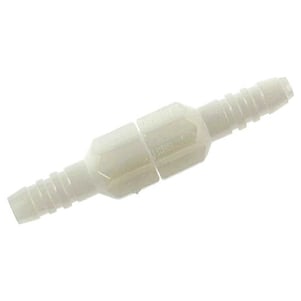
It's very important to take the time to arrange your equipment and tubing so it won't trip you up as you exercise. Otherwise, you risk damaging your equipment or causing serious injury to yourself if you fall.
If you use a portable oxygen concentrator, then you can avoid this problem altogether by wearing your oxygen source on your body. That way, you can move around freely without any long lengths of tubing to get in the way.
Another thing that can help is to use swivel connectors to connect your nasal cannula to your extension tubing and your extension tubing to your oxygen source. This makes it easier to adjust the position of your tubing and gives you a more flexible range of motion.
Use Cushions to Reduce Irritation
The tubing that contacts your face and loops over your ears can cause irritation over time as it touches your skin and moves around. Exercise can make this skin irritation worse by jostling your oxygen mask, nasal cannula, and tubing around even more.
If you don't use them already, you should consider getting ear cushions to protect your ears from the tubing as you work out. These little pieces of foam absorb the impact of tugging and rubbing and can significantly reduce ear pain caused by oxygen therapy.
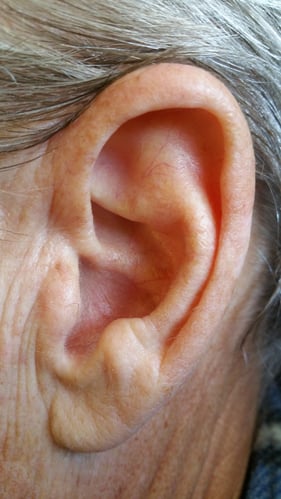
You can also get cushions to go right under your nose to prevent chaffing from your nasal cannula. You can also get soft, fabric covers to wrap any other sections of tubing that tend to rub against your skin.
You can find practical solutions to remedy other oxygen therapy side-effects, too, including mouth and nasal dryness, skin irritation, and chronic ear pain. You will be surprised at how much more bearable oxygen therapy becomes once you've implemented some simple measures of comfort.
To learn more about how to make using oxygen more comfortable, check out our previous post here. This guide will introduce you to a variety of special equipment, practical techniques, and DIY fixes that can make you much more comfortable on oxygen.
Clear Your Airways
COPD often causes excess mucus to clog up your lungs and airways, which makes it more difficult to breathe. Nasal secretions can also affect your oxygen therapy by clogging and dirtying your nasal cannula and tubing.
To address both of these problems, you can take some time to clear excess mucus out of your airways before you work out. You can do this with simple techniques like huff coughing or postural drainage, which help move mucus up and out of your respiratory tract.
You can also use tools like a lung flute, which creates vibrations when you blow through it to help dislodge sticky mucus from the walls of your lungs and airways. High-frequency chest wall oscillation works in a similar way, but with a vibrating vest you wear over your chest.
Back and chest percussion is another way to dislodge extra mucus so you can cough it out of your lungs. To do this, you will need a partner to firmly, repeatedly tap on specific places on your back and chest.
While these techniques may not get rid of the mucus completely, they can get rid of a enough of it to make it easier to breathe. By clearing out space in your airways, it allows more air to flow through, and can reduce unwanted coughing when you're trying to work out.
You should also make sure to drink plenty of water every day to keep your mucus thin, which makes it much easier to clear out of your lungs and airways. And, because oxygen therapy can dry out your mouth and throat, staying hydrated can reduce these side-effects and make oxygen more comfortable to use.
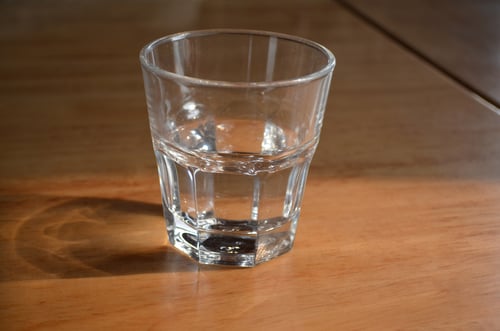
You will also need to drink extra water when you exercise, especially if you sweat a lot or work out in warm temperatures. Keeping a water bottle with you when you do physical activities will help you stay hydrated and also combat dryness from your oxygen therapy.
For more tips on how to clear your airways, check out our comprehensive guide on mucus clearance techniques here. The guide covers all the most effective techniques for getting rid of excess mucus in more detail, including more detail on the methods we touched on here.
Find Exercises for Small Spaces

If you are hooked up to a large oxygen tank when you exercise, then you will have some limitations on how much you can move around. Even portable oxygen tanks and concentrators are sometimes too heavy for patients to lug around during fast-paced activities.
That's why it helps to find exercises that you can do while keeping your portable oxygen concentrator or oxygen tank on the ground nearby. These include exercises that allow you to stay stationary or only move within a small area so you can work out without having to move your tank or carry your portable oxygen concentrator around.
Some examples of activities that allow you to stay in one spot include jogging in place, using a stair step machine, or riding a stationary bicycle. Chair exercises are another great idea because you can sit in one spot with your oxygen source nearby and conserve energy while you build muscle tone.
Resistance bands and free weights are also great tools for building muscle while standing in place. If you have a gym membership, you can also use a variety of exercise machines that can help you maintain your balance and learn proper form.
All of these exercises are easier to do on oxygen because they keep you easily within the reach of your oxygen tubing. This allows you to set down your oxygen tank or concentrator nearby and more or less forget about it until it's time to move again.
Slower-paced activities like walking are also easier on oxygen, because they allow you to carry or wheel your oxygen tank or portable concentrator behind you as you go. You can also try yoga or tai chi, which are exercises made up of slow, fluid movements that are less likely to be hindered by your oxygen equipment.

Including these kinds of stationary and slow-paced exercises in your workout will free you from having to worry about re-arranging your tubing or lugging around your oxygen source while you're trying to focus on exercise. You'll find that working out is much more comfortable when your routine isn't constantly interrupted by having to move your equipment around.
Eat a Healthy Diet
Eating a well-balanced diet that's low in carbs is important for your lungs and can make it easier to exercise. As we've discussed on this blog before, eating too many carbohydrates is hard on your lungs, and can actually make it more difficult to breathe.
By eating a healthy diet, you ensure that your lungs have all the vitamins and nutrients they need to work as effectively as they can. By limiting how many carbs you eat, you can help your lungs work more efficiently, which can reduce how breathless you feel when you work out.

Healthy eating habits work in concert with your oxygen therapy to keep your blood oxygen levels up while you exercise. It can also help you stay more active, more healthy, and make a noticeable difference in your COPD symptoms.
Take Breaks When You Need To

Even if you use oxygen properly when you exercise, you might still struggle with breathlessness throughout your workout. If this happens, don't be afraid to slow down or take a break before continuing to exercise.
As long as you stick to a healthy exercise routine, it's okay to take it at your own pace. While you should try to do as much as you can, it's important not to push your body past its limits.
Talk to Your Doctor

As always, you should talk to your doctor before making any major changes to your activity level or workout routine. While most COPD patients are encouraged to stay as active as they can manage, some patients may have special conditions or limitations to consider.
Your doctor can tell you what kinds of activities are safe and if there are any kinds of exercises you should or should not do. Never hesitate to call or schedule an appointment with your doctor any time you have questions or concerns about your exercise routine or the symptoms you experience when you work out.
Other Tips for Exercising with COPD
Many people struggle to exercise because of their COPD symptoms, even when they use supplemental oxygen. Luckily, there are therapies and medications that can help you exercise more effectively while keeping your COPD symptoms under control.
For example, you can ask your doctor to refer you to a pulmonary rehabilitation class, which is a special program designed to help people with breathing disorders like COPD. Pulmonary rehabilitation teaches you how to better manage your symptoms and stay active through exercise classes and hands-on instruction.
Another thing you can do is practice breathing exercises, which can help you improve your breathing technique. By teaching you how to control your breath and push trapped air out of your lungs, breathing exercises can make it easier to breathe and easier to exercise without feeling short of breath.
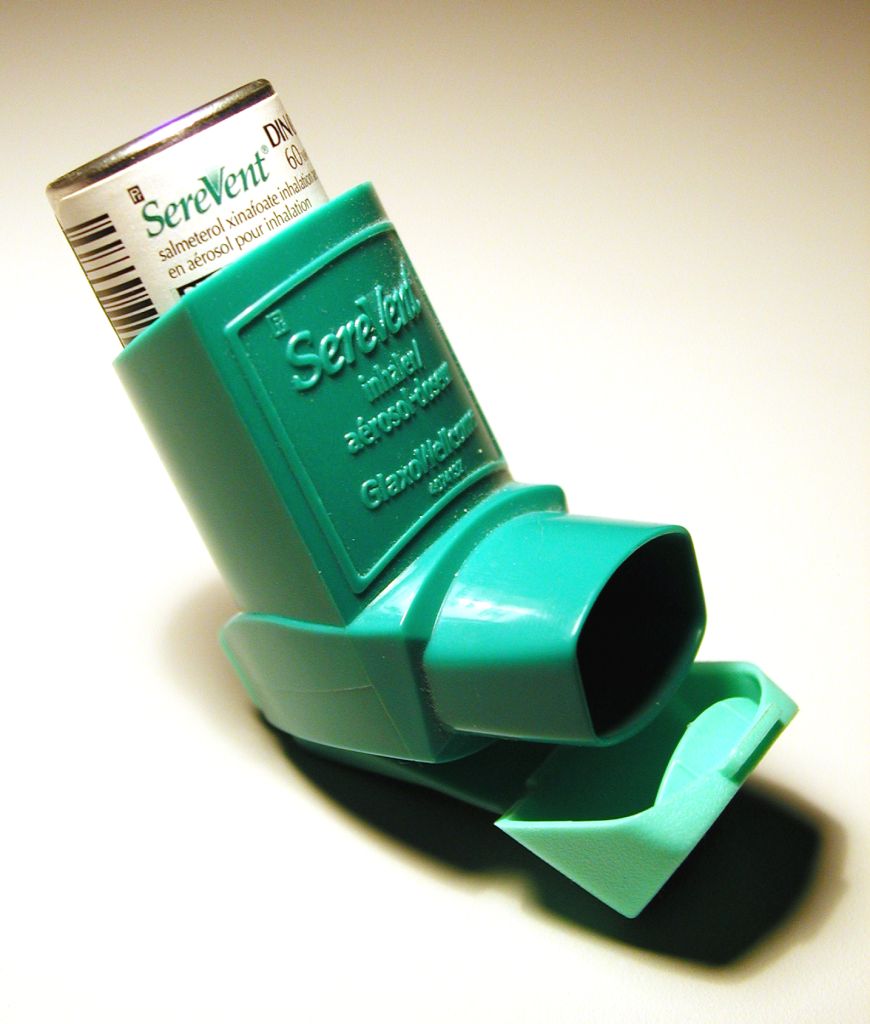
It's also very important to always take your medication on time every day according to your COPD treatment plan. Some doctors also recommend using your bronchodilator medication before you exercise to make it easier to breathe.
Physical activity is important for your heart, your lungs, and your overall quality of life, which is why it's vital to stay active, even if you have to start small. If you struggle to exercise for any reason, talk to your doctor about what you can do to improve your symptoms and work out within your limitations.
For more tips on how to exercise with COPD, you might want to take a look at our article on Pulmonary Rehabilitation or our guide to Exercising at Home with COPD.
Conclusion
While oxygen can make exercise a little more complicated, there's no reason to let it get in the way of living an active life. If you remember the tips and tricks in this article, you should have no problem working out and staying active while using oxygen.
Whenever you get frustrated or discouraged, remember that your oxygen is your lifeline, and it can allow you to do more as you manage your COPD. Many people are able to live much healthier and active lives with oxygen, and you should think of it as an asset, not a hindrance.
Using oxygen is an adjustment at first, but it gets easier with time. It may take a little practice and patience, but soon you'll find that oxygen makes you even more capable of living the life you desire.
Whatever you do, don't give up on exercise and allow yourself to fall into a sedentary pattern. Take action and take charge of your health instead of letting COPD define and limit what you can do.
Remember that you are not alone in your struggles, and many oxygen patients are managing the same problems that you are every day. Remember that many of them successfully manage these problems and live active, fulfilling lives.
As long as you remain confident in your ability to manage your own health you can handle any challenges that come your way. If you stay motivated, stay active, and follow your COPD treatment plan, you'll be able to manage your COPD and keep your body strong.


.png)



